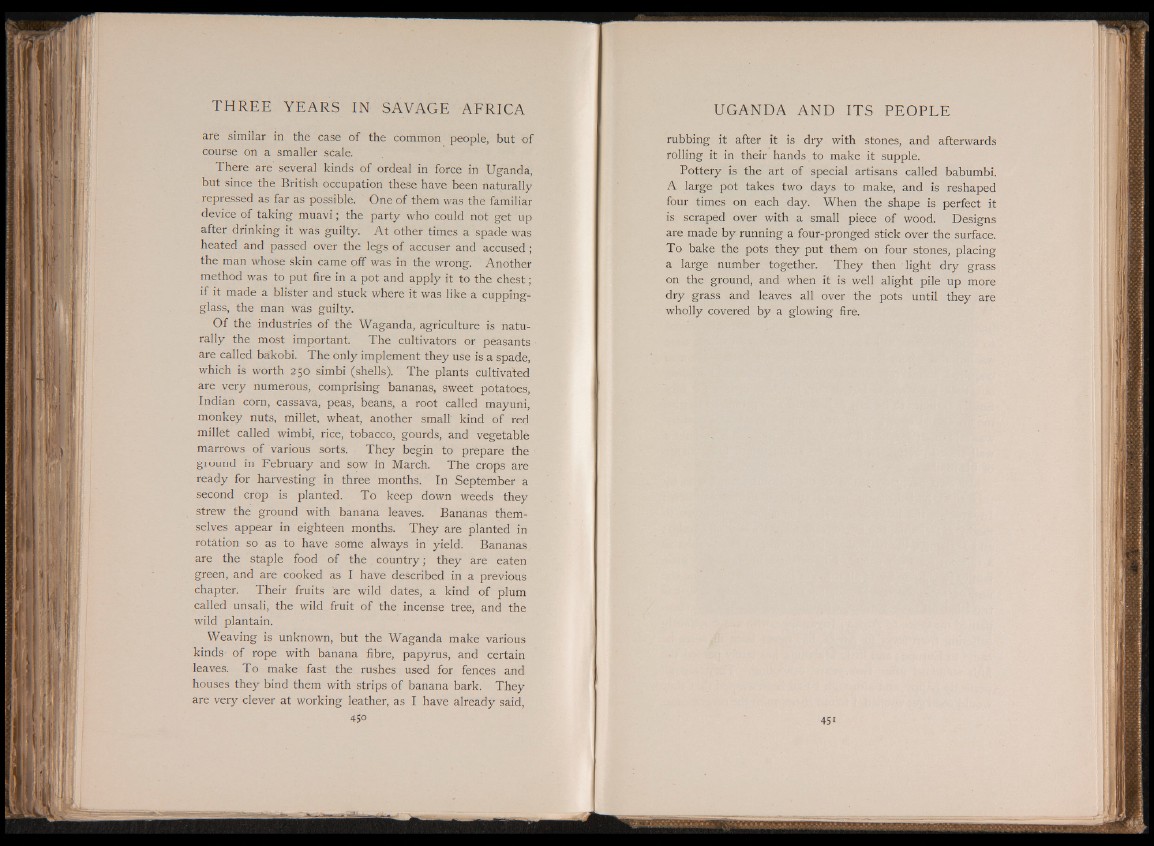
are similar in the case of the common people, but of
course on a smaller scale.
There are several kinds of ordeal in force in Uganda,
but since the British occupation these have been naturally
repressed as far as possible. One of them was the familiar
device of taking muavi ; the party who could not get up
after drinking it was guilty. At other times a spade was
heated and passed over the legs of accuser and accused ;
the man whose skin came off was in the wrong. Another
method was to put fire in a pot and apply it to the chest ;
if it made a blister and stuck where it was like a cupping-
glass, the man was guilty.
Of the industries of thè Waganda, agriculture is naturally
the most important. The cultivators or peasants
are called bakobi. The only implement they use is a spade,
which is worth 250 simbi (shells). The plants cultivated
are very numerous, comprising bananas, sweet potatoes,
Indian corn, cassava, peas, beans, a root called mayuni,
monkey nuts, millet, wheat, another small kind of red
millet called wimbi, rice, tobacco, gourds, and vegetable
marrows of various sorts. They begin to prepare the
ground in February and sow in March. The crops are
ready for harvesting in three months. In September a
second crop is planted. To keep down weeds they
strew the ground with banana leaves. Bananas themselves
appear in eighteen months. They are planted in
rotation so as to have some always in yield. Bananas
are the staple food of the. country ; they are eaten
green, and are cooked as I have described in a previous
chapter. Their fruits are wild dates, a kind of plum
called unsali, the wild fruit of the incense tree, and the
wild plantain.
Weaving is unknown, but the Waganda make various
kinds of rope with banana fibre, papyrus, and certain
leaves. To make fast the rushes used for fenc.es and
houses they bind them with strips of banana bark. They
are very clever at working leather, as I have already said,
450
rubbing it after it is dry with stones, and afterwards
rolling it in their hands to make it supple.
Pottery is the art of special artisans called babumbi.
A large pot takes two days to make, and is reshaped
four times on each day. When the shape is perfect it
is scraped over with a small piece of wood. Designs
are made by running a four-pronged stick over the surface.
To bake the pots they put them on four stones, placing
a large number together. They then light dry grass
on the ground, and when it is well alight pile up more
dry grass and leaves all over the pots until they are
wholly covered by a glowing fire.